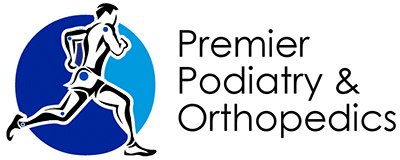Table of Contents
Introduction
The shoulder is a complex joint that is susceptible to a variety of injuries. The shoulder is made up of three bones: the clavicle (collarbone), the scapula (shoulder blade), and the humerus (upper arm bone). These bones are connected by a network of muscles, tendons, and ligaments.
Because of the complexity of the shoulder joint, there are many potential sources of shoulder pain. This is definitely true when it comes to front shoulder pain. In some cases, the pain may be due to an injury to one of the bones or muscles. In other cases, the pain may be caused by arthritis or other degenerative conditions.
What could be the cause of your shoulder pain? It is important to try and identify the source of the pain so that you can seek the appropriate treatment. Various causes of shoulder pain have different treatments, meaning that the wrong diagnosis could lead to ineffective or even harmful treatment.
Some Potential Causes of Front Shoulder Pain
Muscle Strain
One of the most common causes of front shoulder pain is muscle strain. This can occur due to overuse of the muscles or tendons around the shoulder or from a sudden injury. The pain from a muscle strain is typically a dull ache that gets worse with activity, but it can also be sharp and sudden.
The severity of the muscle strain will determine the course of treatment. For minor strains, rest, ice, and over-the-counter pain medication may be enough to ease the pain. More severe strains may require physical therapy or more.
Muscles tend to heal within a few weeks, but the pain may linger for longer. Drink plenty of fluids and eat a healthy diet to help your body recover.
A Pinched Nerve
A pinched nerve can also cause front shoulder pain. This happens when the nerves that run from the neck to the shoulder are compressed. This can happen due to a herniated disc, bone spur, or other problem. The pain from a pinched nerve is often sharp and may radiate down the arm.
Treatment for a pinched nerve may include corticosteroid injections, physical therapy, and surgery.
You can help ease the pain of a pinched nerve by taking over-the-counter pain medication and practicing good posture, but if you have a pinched nerve, treatment from our doctors is necessary.
Rotator Cuff Injury
A rotator cuff is a group of muscles and tendons that surround the shoulder joint and help to keep the ball of the shoulder in place. A rotator cuff injury can occur due to overuse, a sudden injury, or degeneration from aging. Symptoms of a rotator cuff injury include pain and weakness in the shoulder, as well as a creaking or cracking sound when moving the shoulder.
More severe injuries may require physical therapy or surgery.
Superior Labrum Anterior-Posterior (SLAP) Tears
The superior labrum is a ring of cartilage that surrounds the shoulder joint. A SLAP tear is a tear of this cartilage that can occur due to overuse, a sudden injury, or degeneration from aging. Symptoms of a SLAP tear include pain and weakness in the shoulder, as well as a clicking or popping sound when moving the shoulder.
Treatment for a SLAP tear may include physical therapy or surgery in more severe cases.
Adhesive Capsulitis (Frozen Shoulder)
Adhesive capsulitis, also known as frozen shoulder, is a condition in which the shoulder joint becomes stiff and painful. It typically occurs after an injury or surgery to the shoulder, but it can also occur due to arthritis or diabetes. Symptoms of adhesive capsulitis include pain and stiffness in the shoulder, as well as a loss of range of motion.
Treatment for adhesive capsulitis typically includes physical therapy, but surgery may be necessary in some cases.
Fracture
A fracture is a break in a bone. It can occur due to an injury or from overuse. Symptoms of a fracture include pain, swelling, and bruising.
Treatment for a fracture typically includes wearing a sling or other type of support and avoiding activities that stress the injured bone. Surgery may be necessary in some cases.
Shoulder Dislocation
A shoulder dislocation occurs when the shoulder joint is forced out of its socket. It can occur due to an injury or from overuse. Symptoms of a shoulder dislocation include pain, swelling, and bruising.
Treatment for a shoulder dislocation typically includes wearing a sling or other type of support and avoiding activities that put stress on the injured joint. Surgery may be necessary in some cases.
Shoulder Separation
A shoulder separation occurs when the ligaments that attach the shoulder blade to the collarbone are torn. It can occur due to an injury or from overuse. Symptoms of shoulder separation include pain, swelling, and bruising.
Treatment for a shoulder separation typically includes wearing a sling or other type of support and avoiding activities that stress the injured joint. Surgery may be necessary in some cases.
Osteoarthritis
Osteoarthritis is the most common form of arthritis. It is a degenerative disease that affects the joints. The symptoms of osteoarthritis include pain, stiffness, and swelling. Osteoarthritis can lead to joint damage and disability. In the shoulder, osteoarthritis can cause the cartilage to wear away. This can lead to pain, stiffness, and a limited range of motion.
Treatment for osteoarthritis includes pain relief, exercise, and weight loss if needed. Surgery may be necessary in some cases.
Bicep Tendonitis
Biceps tendonitis is an inflammation of the biceps tendon. The biceps tendon is a strong tendon that attaches the bicep muscle to the shoulder. Biceps tendonitis can cause front shoulder pain and tenderness. The pain may worsen with activity or lifting. Biceps tendonitis is treated with rest, ice, and anti-inflammatory medication. Surgery is rarely needed.
Biceps Tendon Tears
Biceps tendon tears are a type of rotator cuff injury. The rotator cuff is a group of four muscles and tendons that attach the shoulder blade to the upper arm bone. The biceps tendon attaches the bicep muscle to the shoulder. A biceps tendon tear can cause front shoulder pain and tenderness. The pain may worsen with activity or lifting.
Biceps tendon tears are treated with rest, ice, and anti-inflammatory medication. Surgery may be necessary to repair the tendon.

Treatments for Front Shoulder Pain
Pain in the front shoulder can be treated with over-the-counter or prescription medications. For most people, pain relief is achieved with NSAIDs, such as ibuprofen or naproxen. If these medications do not provide relief, your doctor may prescribe a stronger medication, such as a corticosteroid.
In some cases, your doctor may also recommend physical therapy to help stretch and strengthen the muscles and tendons around the shoulder. Surgery is rarely needed to treat front shoulder pain but sometimes may be recommended for people with severe pain that does not respond to other treatments.
RICE Method
The RICE method is a common treatment for front shoulder pain. RICE stands for rest, ice, compression, and elevation. This method can help to reduce pain and swelling.
Physical Therapy
Physical therapy may be recommended to help stretch and strengthen the muscles and tendons around the shoulder. A physical therapist can teach you exercises to help reduce pain and improve your range of motion.
Slings and Splints
A sling or splint can help to immobilize the shoulder and reduce pain. These devices are often used for short-term pain relief.
Surgery
Surgery is rarely needed to treat front shoulder pain. However, it may be recommended for people with severe pain that does not respond to other treatments.
Do You Need Help With Front Shoulder Pain?
Looking to schedule an appointment with a physician?
Schedule an appointment with us by calling (916) 961-3434 or by clicking the button below to begin requesting your appointment today!




